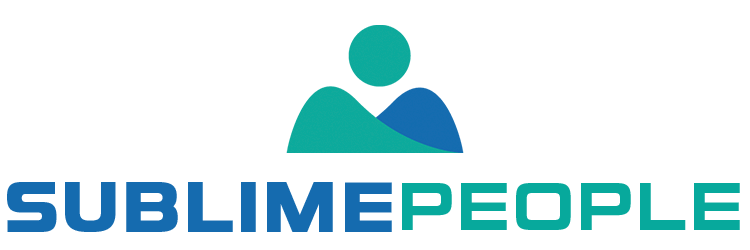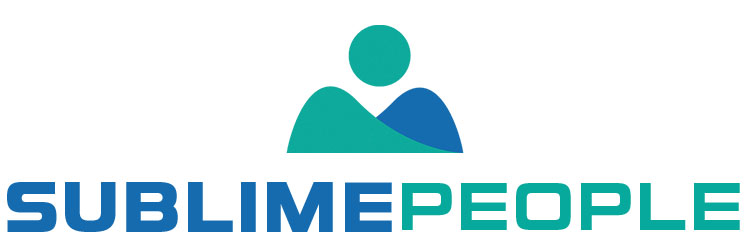To find and attract the best talent, companies need to have a well-thought-out recruitment marketing strategy in place. But what does that mean, exactly? And how do you go about creating one? In this blog post, we’ll answer those questions and more. We’ll also provide tips for putting your strategy into action. So read on to learn everything you need to improve your recruitment marketing efforts.
In this Article:
What do you mean by recruitment marketing?
Recruitment marketing is the term used to describe the proactive and strategic process of attracting, engaging and hiring top talent. It’s a mix of content marketing, employer branding, digital marketing and lead generation tactics that work together to create a compelling candidate experience that encourages job seekers to apply for your open positions.

Why is recruitment marketing important?
There are several reasons why recruitment marketing is important for your business. These are just a few of them:
- It helps you find the best talent: By proactively marketing your job openings to job seekers, you’re more likely to find top talent than if you simply wait for candidates to come to you.
- It saves you time and money: An effective marketing strategy for recruitment can help you fill open positions faster and with less cost per hire. That’s because you’re able to target and engage the candidates who are the best fit for your company, which saves you time and money on the recruitment process.
- It improves your employer brand: A strong employer brand is essential for attracting top talent. And one of the best ways to improve your employer brand is through a well-executed employer branding strategy.
- Improves company culture: Good marketing can also help improve your company culture. That’s because when you attract and hire top talent, you’re also bringing in people who are a good fit for your culture and values.
- Attracts passive candidates: Passive candidates are those who aren’t actively looking for a job but would be open to the right opportunity. Because they’re not actively searching for jobs, they can be difficult to reach. But with a targeted marketing strategy, you can engage these candidates and encourage them to apply for your open positions.
- It helps recruiters: A good marketing strategy can also help your recruiters be more successful in their jobs. That’s because it provides them with a pool of high-quality candidates to choose from, which makes their job easier and helps them fill positions faster.
- Attracts large talent pool: By marketing your jobs to a wider audience, you can attract a larger talent pool. This gives you more candidates to choose from and increases your chances of finding the perfect fit for your open positions.
- Increases conversation rate: If you do it right it will increase your application conversion rate, meaning the percentage of candidates who apply for a job and are hired.
- Increases trust and transparency: It will help build trust and transparency between you and your candidates. That’s because it allows you to effectively communicate your company’s values, mission and culture to job seekers.

The recruitment marketing funnel
The recruitment marketing funnel is the process that recruitment marketers use to attract, engage, and convert job seekers into candidates. There are several funnels you can use. A typical funnel can be based on the AIDA model, which stands for Attention, Interest, Desire, and Action.
- Attention: The first step in the funnel is to get the attention of your target audience. You can do this through various marketing channels, such as online ads, social media, and email marketing. Ask yourselves questions like, “Where do my target candidates spend their time online?” and “What type of content will capture their attention?”
- Interest: Once you have the attention of your target audience, the next step is to generate interest in your company and open positions. You can do this by creating compelling content that highlights the benefits of working for your company. This could include blog posts, informational content, videos, and social media posts. Ask questions like, “What type of content will interest my target candidates?” and “What type of messaging will resonate with them?”
- Desire: The next step is to generate desire for your open positions. You can do this by creating targeted descriptions that speak to the needs and aspirations of your target candidates. You should also highlight the unique aspects of your company culture that make it a great workplace. Ask yourself questions like, “What type of job will appeal to my target candidates?” and “What type of culture do they desire?”
- Action: The final step is to encourage your target candidates to take action and apply for your open positions. You can make it easy to find and apply for jobs on your website and use targeted calls to action in your marketing campaigns. You should also provide a clear path from application to hire so that candidates know what to expect during the process. Ask questions like, “What type of CTA will encourage my target candidates to apply?”, “What is the application process like?”, and How can I make it easy for candidates to apply for open positions?”
AIDA is just one funnel you can use, and there are a variety of funnels you can use to attract, engage, and convert candidates. The key is to find the funnel that works best for your company and your target audience. Sometimes, it takes a bit of trial and error to find the best one.

What are some recruitment marketing best practices?
Some best practices for recruitment marketing include:
- Analyze your target audience: Understand your target group and create content that appeals to their needs and interests.
- Use employer branding: This is the image your company projects to potential employees. It should be positive and attract the type of candidates you want to hire.
- Use digital marketing tactics: Use social media and email marketing to reach job seekers where they’re already spending their time. Also, social media advertising and Google AdWords are great ways to reach candidates.
- Generate quality content: Write compelling copy and create engaging visuals to capture the attention of your target audience.
- Make it easy to apply: Use an online application system and make sure your website is mobile-friendly.
- Optimize your career site: Your career site is one of the most important tools in your arsenal. Make sure it’s easy to use and provides the information job seekers need to decide to apply for a position.
- Generate high-quality leads: Not all leads are created equal. You want to focus on generating high-quality leads that are more likely to convert into actual hires.
- Use analytics: Track your campaigns and measure your success to see what’s working and what’s not.
Recruitment marketing is a complex process, but following these best practices can help you attract the right candidates for your open positions.

How to build a recruitment marketing strategy?
There are several steps you can take to build a successful recruitment marketing strategy:
- Define your target audience: Who are you trying to reach with your marketing campaign? What type of candidates are you looking for? Defining your target audience will help you create more effective marketing materials.
- Research your competition: What are other companies in your industry doing to attract talent? What type of recruiting strategies do they use? Knowing your competition will help you create a more unique and effective recruitment marketing strategy.
- Create compelling content: Write copy and create visuals that speak to the needs and interests of your target audience. Your content should be engaging and make it easy for job seekers to learn more about your company.
- Use digital marketing tactics: Utilize social media, email marketing, digital advertisements and other digital tactics to reach job seekers where they’re already spending their time.
- Make it easy to apply: Use a clear call to action and ensure your website is mobile-friendly. Candidates should be able to easily find and apply for open positions.
- Evaluate your results: Track your marketing campaign and measure your success to see what’s working and what’s not. Regularly evaluating your results will help you adjust your strategy as needed.
Recruitment marketing is a complex process, but following these steps can help you build a successful strategy for attracting talent.

Recruitment marketing tools and trends
To increase your efficiency of course you want to use the latest tools. And to make sure you are using the best tools, we have selected a couple for you:
- Social media platforms: Utilizing social media in your recruitment marketing strategy is a great way to reach candidates who are already spending their time. Platforms like LinkedIn, Twitter and Facebook can help you connect with potential hires and promote your open positions.
- Email marketing: Email marketing can be a great way to reach candidates with your recruitment marketing message. You can use email to promote open positions, share content and stay in touch with potential hires.
- Applicant tracking system (ATS): An ATS is a software application that helps you manage the recruiting process, from sourcing candidates to tracking applications. Using an ATS can help you save time and keep your recruitment marketing campaigns organized.
- Chatbots: Chatbots can help you automate the recruiting process. You can use chatbots to answer questions, schedule interviews and even make job offers.
- Career website: A career website is a great way to showcase your company culture and attract candidates to your open positions. Make sure your career site is mobile-friendly and includes information about your company culture, benefits and open positions.
Following the latest trends and using the best tools will help you create a more effective recruitment marketing strategy.

What recruitment marketing efforts should recruiters focus on?
There are a variety of recruitment marketing tactics that all recruiters should master, including:
Creating a careers page and solid content
Your career webpage is important to the recruiting campaign. You will typically drive top-funnel leads for them to increase interest in applying. So they’ll have cool and relevant content and preferably, multimedia content. The careers website should be consistent so that candidates can travel in an integrated fashion wherever they come from. It must also include strong and persuasive content such as comments from present employees.
For job seekers, a career site can summarize the company and its culture, as well as a list of current open positions. It can also be a helpful way to learn about the company’s recruitment process and what it is looking for in candidates.
For employers, a career site can be an effective way to reach out to potential candidates and promote open positions. It can also help to build the company’s brand and reputation as an employer of choice.
When designing a career site, there are a few things to keep in mind:
- User-friendly: The site should be easy to navigate and user-friendly.
- Responsive: It should be mobile-optimized, as many job seekers will access it from their smartphones or tablets.
- Informative: The site should be informative and give visitors a good sense of what it is like to work at the company.
- Updated: Updated it regularly with new content, such as blog posts, articles, or videos.
- Converting: The site should include a way for job seekers to submit their resumes or applications.
Your website is one of the most important tools in your recruitment marketing arsenal. Make sure it’s easy to use and provides the information job seekers need to decide to apply for a position. You can create content such as FAQs, company overviews and employee testimonials to help candidates learn more about your company.
Your goal should then be to build a brand identity hub that can increase awareness (increase traffic via both organic and pay-per-click marketing), increase interest and attract potential candidates to apply.

Building a solid employer brand
Your employer brand is how your company is perceived by employees, job seekers and the general public. It’s important to have a strong employer brand because it can help you attract top talent and retain current employees.
Think about your employer brand as the promise you make to your employees. It’s what sets you apart from other companies and makes you an attractive place to work.
To build a strong employer brand, start by creating a brand identity that includes your company values, mission and culture. Then, create content that showcases your employer brand, such as blog posts, articles, infographics, or videos. You can also use social media to promote your employer brand.
Ensure your website and careers page are up-to-date and include information about your employer brand. You can also use job boards and other online platforms to promote your employer brand.

Creating a social media strategy
A social media strategy is a plan of action for using social media to achieve your business goals. Regarding recruitment, social media can be used to attract top talent and build relationships with potential candidates. To create a social media strategy, start by identifying your target audience and their platforms. Then, create content that is relevant and engaging for your target audience.
Be sure to post regularly and interact with your followers. You can also use social media ads to reach a wider audience. When creating your ads, be sure to target your audience specifically and use relevant keywords.

Creating great recruitment job ads
The dull job advertisements in Beige have little effect on the selection process. Make sure your ads stand out by using bright colours, images and videos.
Your ad should be clear and concise, with a strong call to action. It should also include relevant keywords so that it can be easily found by job seekers.
Finally, ensure your ad links to a landing page on your website where candidates can learn more about the position and apply.

Using newsletters to engage candidates
The ability to keep in contact and develop a strong talent pool is key for your recruitment efforts. Newsletters can help you keep in contact and develop a strong talent pool with candidates. You may send a list of relevant job news to candidates who have signed up for your newsletter or include other content that may interest them.
Including a CTA such as “subscribe to our newsletter” on your website and social media pages can help you increase the number of subscribers.
When creating your newsletter, be sure to use an engaging subject line and design. Include relevant and interesting content, and limit the number of CTAs to avoid coming across as too salesy.

Creating an employee referral program
Employee referrals can be an effective and overlooked hiring tool. An employee referral program is a system in which employers give employees incentives to refer candidates for open positions. They can do this through various methods, such as giving out cash bonuses, offering gift cards, or providing time off. The program is designed to encourage employees to refer high-quality candidates, who are more likely to be familiar with the company’s culture and values.
There are a few things to keep in mind when setting up an employee referral program:
- Company rules: Define the program’s rules clearly and make sure all employees know them.
- Track referrals: Set up a system for tracking referrals, so you can properly reward employees who refer successful candidates.
- Create incentives: Offer incentives that will genuinely motivate employees to participate in the program.
- Communicate program: Communicate the program to all employees regularly, so they can remember to take advantage of it.
- Thank employees for referrals: Make sure to thank employees who refer successful candidates, as they are helping to improve the quality of your workforce.
An employee referral program can be an excellent source of high-quality candidates, as it encourages employees to recommend people they know would be a good fit for the organization. By setting up a program and following the tips above, you can maximize its effectiveness and make it a valuable part of your recruitment strategy.

How can you track and optimize your recruitment marketing campaigns?
There are several ways to track and optimize your recruitment marketing campaigns. Here are a few tips:
- Use analytics: Use data and analytics to track your campaigns and see what is working. This will help you improve your campaigns over time.
- Test and experiment: Try out different approaches and see what works best for your company. Be sure to test different aspects of your campaigns, such as the copy, images, and call to action.
- Engage with candidates: Get feedback from candidates on your campaigns. This can be done through surveys, interviews, or focus groups.
Recruitment marketing is an important part of any recruitment strategy. By using the tips above, you can optimize your campaigns and ensure they are effective.
Effective and innovative recruitment marketing strategies are built on a solid understanding of your target audience and what they are looking for in job postings. This way, you can craft messages that speak to their needs and interests.

What are some recruitment marketing myths?
Despite the popularity of recruitment marketing, there are still some myths about it. Here are four of the most common myths:
- Only for big companies: Recruitment marketing can be used by companies of all sizes.
- Only for certain types of jobs: Recruitment marketing can be used to fill any type of position.
- It’s too expensive: While there are some upfront costs, recruitment marketing can save you money in the long run by reducing your reliance on traditional recruiting methods. It also decreases turnover and increases employee engagement.
- It’s ineffective: Recruitment marketing is a proven method for attracting and hiring quality candidates. If it is not working you are doing something wrong.
- High-level positions to fill: While recruitment marketing can be used to fill high-level positions, it is also effective for filling entry-level and mid-level positions.
- Only for hiring quickly: While recruitment marketing can help you hire quickly, it is also an effective tool for filling positions that are not yet open. Since it increases the willingness to work for your company.
Don’t let these myths dissuade you from using recruitment marketing. It is a proven method for attracting and hiring quality candidates.

A word from SublimePeople
We hope you enjoyed reading this article. A well-thought recruitment marketing strategy can be an excellent way to improve your recruitment process and attract high-quality candidates.
It helps organizations reach out to potential candidates, engage them in the recruiting process, and build relationships that last long after the hiring process is complete. If done correctly, recruitment marketing can help you attract and hire top talent for your organization.
Understanding the basics of recruitment marketing before you start using it in your company is important. By following the tips in this article, you can set up a successful recruitment marketing campaign that will help you hire the best candidates for your open positions.
Did you find the tips discussed above useful for your organization? Tell us in a comment!




